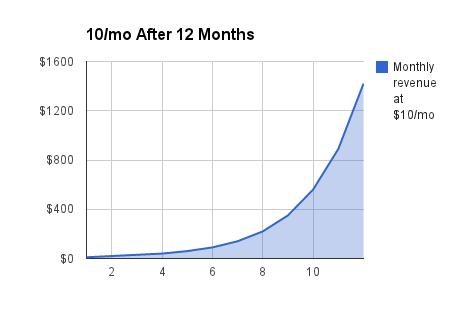Are You Reinvesting Enough
Post on: 18 Сентябрь, 2015 No Comment

Email this article
Comments *
Faced with new, desirable investment opportunities, the CFO of a client company of ours recently chose not to cut her substantial share-repurchase program to fund the investments. Instead, she decided to finance the new outlay by slashing investments in two other businesses, both of which were growing well and earning strong returns. She missed an opportunity to step up the rate at which the company reinvests in itself to drive its share price higher over time. Value is not created solely by maximizing returns on capital, but by balancing the pursuit of higher returns with an adequate emphasis on investment in future growth.
How much cash flow does your company reinvest for the future? Using the “reinvestment rate,” which quantifies the percentage of cash flow that is reinvested in the business, can be a good way to gauge that amount. To calculate it, add capital expenditures, acquisitions, research and development, and other investments. Next, divide that sum by the total of earnings before interest, taxes, depreciation, and amortization (EBITDA), plus R&D and rent, less taxes.
Top-line growth is, obviously, an important driver of total shareholder return (TSR), which reflects the stock-price change plus the dividends paid during a period. What may be less intuitive is that sustained growth is typically the result of having a higher reinvestment rate. My associate Jeff Routh and I found that the companies with the highest reinvestment rates delivered higher compound annual growth rates of revenue over the past decade (see Figure 1, below). Our sample was the 1,000 largest nonfinancial U.S. companies, excluding those not public for the full decade.
Recommended Stories:
Granted, high reinvestment rates drive more revenue growth; however, the question is whether value is really being created. Our capital-market research demonstrates that the companies with the highest reinvestment rates delivered better TSR over the decade ending in 2009 (see Figure 2, below).
Creating Long-Term Value
The benefits of reinvestment are so significant that of the 277 companies that reinvested more than 100% of their cash flow for the full decade, more than 200 delivered higher TSR than the median of the 0%–50% reinvestment group. This outperformance by high-reinvestment companies is particularly noteworthy considering the tough economic and stock-market environment of the decade.
The reinvestment rate is an important driver of TSR and should be a prominent and deliberate strategic discussion point. As stated earlier, the goal should not be to maximize the rate of return but to balance the pursuit of higher returns with adequate reinvestments in growing the business. Although larger companies may find it difficult to match the reinvestment rates of small companies, many companies I have recently worked with would benefit from raising their reinvestment rate.
Our findings indicate that this is not a superficial stock-market effect in which investors arbitrarily assign higher multiples to high-reinvestment companies. In fact, it is quite the opposite. While high reinvestment typically boosts TSR over time, it does not improve price-to-earnings or enterprise value-to-EBITDA multiples. High reinvestment does not boost valuation at a point in time; instead, it drives value appreciation over time. Unfortunately, executives who are too fixated on current valuation multiples may tend to underinvest.
I have met many finance executives at companies with low reinvestment rates who understand and agree with our findings that high reinvestment rates are good. But they claim they don’t have many opportunities for profitable reinvestment. One CFO defended his position by stating that he “never turns down positive net-present-value investments.” Upon deeper review, I found that the company’s culture and internal processes overemphasize avoiding bad investments. None but the highest-return investments are even proposed for corporate consideration.

In many companies, arbitrarily tight capital-expenditure budgets set a strategic tone of restraint, which in turn sets the bar very high in the minds of operating managers. Such stifling cultures need to change if finance executives are to adequately promote desirable growth investments.
Assessing Your Approach
Is the reinvestment rate more important for companies that earn high internal cash-on-cash operating returns, but less so for those with low returns? In our research, we found that whether you have high, medium, or low returns, TSR is positively correlated with higher rates of reinvestment. As we would expect, however, high-return companies get a larger benefit from reinvestment than low-return companies.
Some may question the causality in our findings that high-reinvestment companies typically achieve higher revenue growth and higher TSR. Are the successful companies the only ones that can afford to reinvest more? Do the “good” industries artificially make reinvestment appear desirable for all? Our research indicates that the results are generally consistent across all industry sectors.
As the economy strengthens, CFOs should assess their companies’ reinvestment rates to ensure enough capital is being deployed to build future value via capital expenditures, R&D, and maybe even acquisitions. Examine the reinvestment rates across your business units to see if enough reinvestment is occurring where the returns and opportunities are highest.
To ensure your corporate culture supports adequate reinvestment, review all business-management processes and eliminate biases against reinvestment. Consider adding the reinvestment rate to planning and performance-measurement processes. In doing so, avoid measuring and benchmarking investment as a percent of revenue, since that creates a bias in favor of less-profitable businesses.
Always measure the reinvestment rate as a percentage of “preinvestment” cash flow to ensure that the signals reinforce making adequate investment in the most profitable businesses. Constantly reinforce this in planning, capital investment, and performance-review meetings. Make sure everyone understands that value is not created from maximizing returns, but from balancing the pursuit of higher returns with investment in future growth.
Gregory V. Milano is co-founder and CEO of Fortuna Advisors LLC, a strategic advisory firm, and a contributor to CFO.com.














